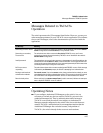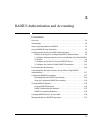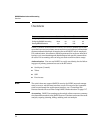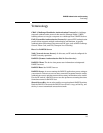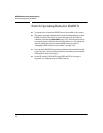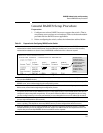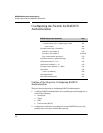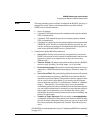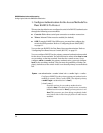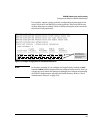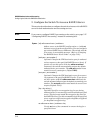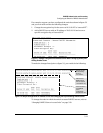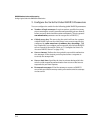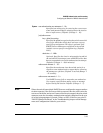
RADIUS Authentication and Accounting
Configuring the Switch for RADIUS Authentication
Note- This step assumes you have already configured the RADIUS server(s) to
support the switch. Refer to the documentation provided with the
RADIUS server documentation.)
• Server IP address
• (Optional) UDP destination port for authentication requests (default:
1812; recommended)
• (Optional) UDP destination port for accounting requests (default:
1813; recommended)
• (Optional) encryption key for use during authentication sessions with
a RADIUS server. This key overrides the global encryption key you
can also configure on the switch, and must match the encryption key
used on the specified RADIUS server. (Default: null)
3. Configure the global RADIUS parameters.
• Server Key: This key must match the encryption key used on the
RADIUS servers the switch contacts for authentication and account-
ing services unless you configure one or more per-server keys.
(Default: null.)
• Timeout Period: The timeout period the switch waits for a RADIUS
server to reply. (Default: 5 seconds; range: 1 to 15 seconds.)
• Retransmit Attempts: The number of retries when there is no server
response to a RADIUS authentication request. (Default: 3; range of 1
to 5.)
• Server Dead-Time: The period during which the switch will not send
new authentication requests to a RADIUS server that has failed to
respond to a previous request. This avoids a wait for a request to time
out on a server that is unavailable. If you want to use this feature,
select a dead-time period of 1 to 1440 minutes. (Default: 0—disabled;
range: 1 - 1440 minutes.) If your first-choice server was initially
unavailable, but then becomes available before the dead-time expires,
you can nullify the dead-time by resetting it to zero and then trying to
log on again. As an alternative, you can reboot the switch, (thus
resetting the dead-time counter to assume the server is available) and
then try to log on again.
• Number of Login Attempts: This is actually an aaa authentication
command. It controls how many times in one session a RADIUS client
(as well as clients using other forms of access) can try to log in with
the correct username and password. (Default: Three times per ses-
sion.)
(For RADIUS accounting features, refer to “Configuring RADIUS Accounting”
on page 5-17.)
5-7



